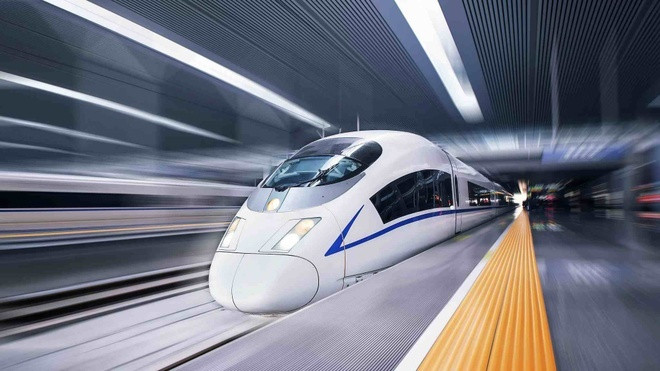Minister of Planning and Investment Nguyen Chi Dung, also chairman of State Appraisal Council of high-speed railway project on the north-south axis, said at a meeting late last month that despite leveraging experience in developed countries, it was hard for Vietnam to carry out modernisation without possessing a modern and synchronous railway infrastructure with a high capacity,

The meeting featured leaders of relevant ministries and branches where the high-speed railway passes through and independent experts in the railway and transport sector.
“These are huge and strategic issues. As research time is limited, it requires the relevant units to be more urgent, studying carefully and with high responsibility before submitting to competent authorities for approval,” said Dung.
In late February, the Politburo issued Conclusion No. 49-KL/TW on the development of Vietnam's railway transport to 2030.
The conclusion identifies the north-south high-speed railway as the network 'backbone' of the country.
By 2025, efforts will gear towards completing and accepting the investment policy of the north-south high-speed railway project, and commencing several priority sections by 2030.
A 2091 report on the feasibility of the project said the Ministry of Transport proposed to invest in building a 1,559km-long new, double track high-speed railway, with standard gauge 1,435mm and designed speed reaching 350km per hour, and operating speed 320km per hour.
The project's total investment fetches $58.7 billion, of which state capital accounts for 80 per cent, and equity capital about 20 per cent.
The Ministry of Transport proposes two phase investment, in which Phase I from 2020 to 2032 will invest in the Hanoi - Vinh and Nha Trang - Ho Chi Minh City sections with a cost of about $24.71 billion; Phase II from 2032 to 2050 sees investment in Vinh - Danang section for completion by 2040, whereas completion of Danang - Nha Trang section is slated for 2050.
However, according to the appraisal report, with the goal of only transporting passengers, not cargo, the project does not guarantee investment efficiency.
The consulting unit said that the project was feasible with the option of using a combination of high-speed passenger and freight trains, with speed levels of 225km per hour and 160km per hour, respectively.
This speed allows the operation of a mixture of passenger and freight trains, opening opportunities for local firms to access and master high-speed rail technology.
If this option is implemented, every day, the north-south corridor would accommodate 270 pairs of passenger and cargo trains instead of only 116 pairs of trains as proposed by the Ministry of Transport in 2019, meeting the objectives set out in the railway network master plan for 2021 - 2030, as approved in October 2021 by the prime minister.
With this option, the consultants set the project's total investment at $61.02 billion for two phase implementation. In which, Phase I from 2025 to 2035 will have a total investment value of $27.246 billion, and Phase II from 2035 to 2041 having $33. 781 billion.
Source: VIR